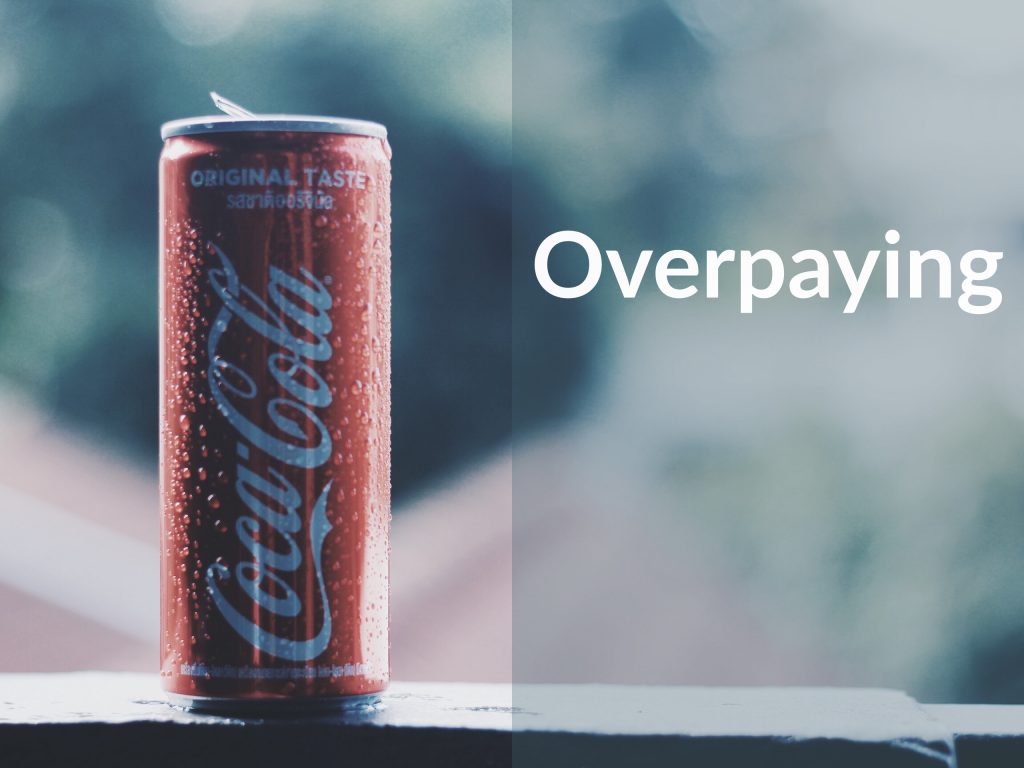How asymmetric information, price discrimination and the stories we tell ourselves contribute to artificial profits and income inequality.
In this episode you’ll learn:
- What are rents in terms of artificial profits.
- What is value based pricing?
- How the stories we tell ourselves influence what we buy and how much pay.
- Why are companies destroying billions of dollars of their own products
Show Notes
A Look At Coca-Cola’s Advertising Expenses – Investopedia
Rents: How Marketing Causes Inequality by Gerrit De Geest
This Is Marketing: You Can’t Be Seen Until You Learn To See by Seth Godin
130 Years of Coke Taglines – AdAge
Why fashion brands destroy billions’ worth of their own merchandise every year – Chavie Leiber – Vox
Episode Sponsors
Episode Summary
Most consumers don’t think of income inequality when they purchase everyday goods and services. However, the two are tied together at the foundation, and on this episode of Money For the Rest of Us, David explains why. On this episode, you’ll learn about value-based pricing structures, and how the stories we tell about ourselves and others influence what we buy and for how much. Don’t miss hearing about the 3 main components you need to consider when purchasing products, so be sure to listen to this full episode.
Rents, overpayments, and income inequality are all side effects of market distortions
In the book “Rents: How Marketing Causes Inequality,” Gerrit De Geest explains rents as, “the distributional side effects of market distortions. They are the extra income that some people receive because of market distortions.” Note that these rents are not housing costs, rather they are overpayments or “artificial profits that shouldn’t exist in a perfectly competitive market.”
Essentially, they make some people wealthier and others poorer (the receiver of the profits and those who pay for the product. Overpayment leads to income inequality because those that receive the overpayment typically have above average incomes, versus those who overpaid who are going to have less income. For the full argument behind why overpayments lead to income inequality, and to learn about information rents, be sure to listen.
What is value-based pricing, and how does it differ from the actual cost?
Value-based pricing is far more common than the idealistic cost-plus pricing. Instead of pricing a product slightly above the cost of production, to make a fair profit, the majority of companies price their products based on how much the consumer values the product. By capturing that perceived value, companies can bring in higher profits for their goods and services.
Pricing is inextricably tied to the stories we tell about ourselves and to others
Value-based pricing and the stories we tell ourselves when purchasing products go hand in hand. Expert Seth Godin explains that “What you charge is tied up inextricably to the story you are telling, who you are telling it to, and the story they are going to tell themselves once they see how much you’re charging, and what you’re charging shouldn’t necessarily be related to cost. If you match to the cost of materials, you’re ignoring what motivates people to buy.”
For example, a necklace simply isn’t a piece of metal and stone used for bodily decoration. It’s often a symbol of love, friendship, and deep human emotions. Stories are tied to feelings, which are connected to marketing tactics, ultimately resulting in a willingness to pay based on perceived value rather than the actual production cost.
Consumers need to do these 4 things when considering the cost of goods and services
Overpayments may seem unavoidable in the 21st-century marketplace. However, David outlines 4 areas to consider when determining which products to pay for based on value vs. cost. They’ll help you become a more conscious consumer and recognize when rents, overpayments, and income inequality are at stake. Here they are.
- Acknowledge the story you’re telling yourself, and recognize what it is about certain products that resonate with us. Is that resonation worth an overpayment?
- Know what the price is and how its set.
- Recognize the marketing ploys that are being used in today’s economy.
- Be aware of the social and environmental costs of the things we buy, and potentially overpay for.
Episode Chronology
- [0:20] Rents, overpayments, and income inequality are all side effects of market distortions
- [8:55] Value-based pricing vs pricing based solely on cost
- [17:13] Pricing is inextricably tied to the stories we tell about ourselves and to others
- [22:30] Consumers need to consider these 4 things when evaluating the cost of goods and services

